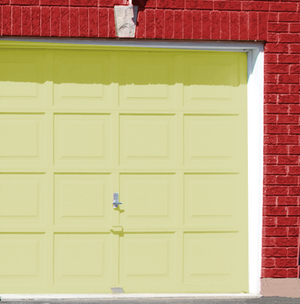Maybe you want to use your garage for a workshop. Or perhaps you are tired of freezing every time you walk to your car. Whatever the case, it is not difficult to insulate a garage yourself and retain some of the heat during winter.
Types of Garage Insulation
Before you start to insulate a garage for winter, you need to decide which type of insulation will work best for your garage. According to Home-Garage-Help.com, there are four basic types of garage insulation to consider.
First, if your garage has unfinished walls, the easiest solution is batt insulation. This is the kind you see most often between joists and studs; it is made of fiberglass or a similar material and comes in rolls. You simply have to staple the sheets between the studs in your garage and cut to fit.
Of course, if your garage is attached to your home or otherwise finished, you will need to use garage insulation for drywall. You can blow loose-fill insulation into the walls of your garage through a hole in the drywall.
Insulation Safety
Before you begin, remember that safety should be your top priority when you insulate a garage. Wear safety goggles at all times as well as cloth or leather gloves to protect your hands. Make sure there is adequate ventilation in the garage by opening a window or door.
Insulate a Garage with Batt Insulation
If you are going to use batt insulation to insulate a garage, you will first need to purchase your materials. You can find batts at any home improvement store, such as Home Depot or Lowe’s, for between $20 and $60 per roll, depending on the quality and size. The size is not necessarily important because you can always cut to fit in your walls.
You will also need a utility knife to cut the insulation, vapor seal to cover the insulation and a staple gun to attach it to your studs and joists.
The easiest way to insulate a garage with exposed walls is to staple the batt to the walls first, then cut accordingly. This ensures a tight fit between each of the studs and minimizes wasted material. If you discover any gaps upon completion, you can cut new strips of batt to fill those cavities.
If you’ve purchased your batts with a vapor seal already on it, you don’t have to worry about the next step. If not, you’ll need to cover all exposed garage insulation with a vapor seal plastic film. This material helps protect your garage from moisture.
Insulate a Garage with Drywall
If you have a finished garage, you will need to use an insulation blower with a foam or fiberglass insulation. This is not as difficult as it sounds, and you can purchase a garage insulation blower at your local home improvement store with explicit instructions on how it should be used.
Many times, you can also rent an installation blower when you purchase a blow-in product. If you are worried about the environment, you can purchase eco-friendly insulation that is safer for your environment – the choices are practically endless.
To install blow-in insulation, you can simply drill a hole in your drywall between each stud (you’ll need a stud finder). The directions on the product will help you do this effectively, but remember that the blower should be placed flush against the wall and that you must pay attention to pressure at all times.
Insulate Garage Doors and Windows
Garage insulation for the walls is only part of the job. When you insulate a garage, you also need to focus on the areas that permit air flow most often: Doors and windows. These areas are the most vulnerable to weather in winter.
First, you might want to purchase an insulation sealant for the doors and windows. You can find 16-oz. cans of this product for under $10 at a home improvement store, and this is often the most effective method of sealing up those vulnerable areas.
You should also purchase sheets of weather stripping for garage insulation. These can be placed along the edges of all doors and windows to help close any gaps between their frames and the wall or ground. They are typically applied with an adhesive and are easy to install.
Why Insulate a Garage?
Comfort is the primary reason why most people insulate their garages, but it can also save significant money. For example, a garage that is attached to the house shares a wall with the home. Every time you open the door to the garage, you allow cold air inside during winter and hot air inside during summer.
Furthermore, if you intend to use your garage for anything other than vehicle and equipment storage, you will want to be comfortable while inside. Garage insulation will help keep the temperature more bearable.
Source:
Home-Garage-Help.com


